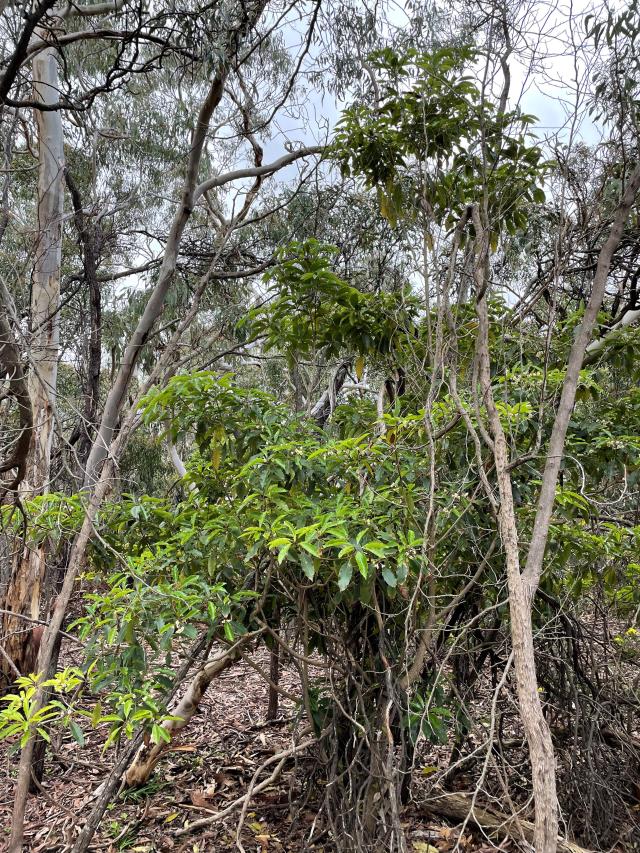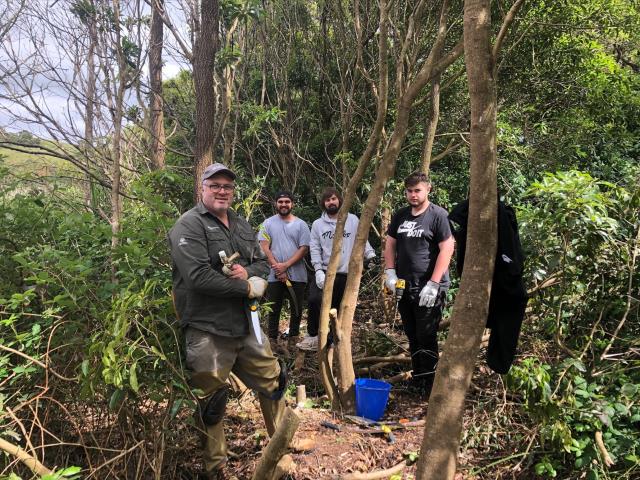THE Limestone Coast Landscape Board recently joined forces with Burrandies Aboriginal Corporation’s environmental on-ground works team to treat an infestation of Sweet Pittosporum (Pittosporum undulatum) at Lake Leake.
Sweet Pittosporum, an evergreen tree native to the eastern states of Australia, has spread far beyond its original range as a result of widespread planting and is now a declared woody weed invading native vegetation.
The species has been detected at Lake Leake and has the potential to take over and further reduce the natural biodiversity of the area with native vegetation being threatened.
Limestone Coast Landscape Board Landscape Operations Team Leader Deb Lang said the project aims to restore landscape balance in the Lake Leake area while retaining habitat for known native animals.
“The Limestone Coast Landscape Board has committed funds to reducing this threat and with the expertise and knowledge of the Burrandies environmental on-ground works team have undertaken this important work,” Ms Lang said.
Burrandies is a not-for-profit Aboriginal community organisation and provides a range of community services.
“It was fantastic to have the opportunity to collaborate with and utilise the expertise of the Burrandies environmental on-ground works team and I strongly encourage other organisations to investigate their fee-for-service offering,” Limestone Coast Landscape Board First Nations Partnerships Engagement Coordinator David New said.
Lake Leake is considered an important visitor destination, attracting locals and tourists to the area with many social activities on offer such as boating, canoeing, bird watching and fishing.
The picnic and barbecue facilities also encourage families to visit the area.
The Glencoe Progress Association has been committed to supporting the maintenance of Lake Leake facilities for many years, along with Wattle Range Council.
The recent completed work has been a significant start to controlling the infestation in the area but follow-up work will be required to ensure it does not re-emerge.
People are encouraged to report instances of Sweet Pittosporum around the region to the Limestone Coast Landscape Board.









